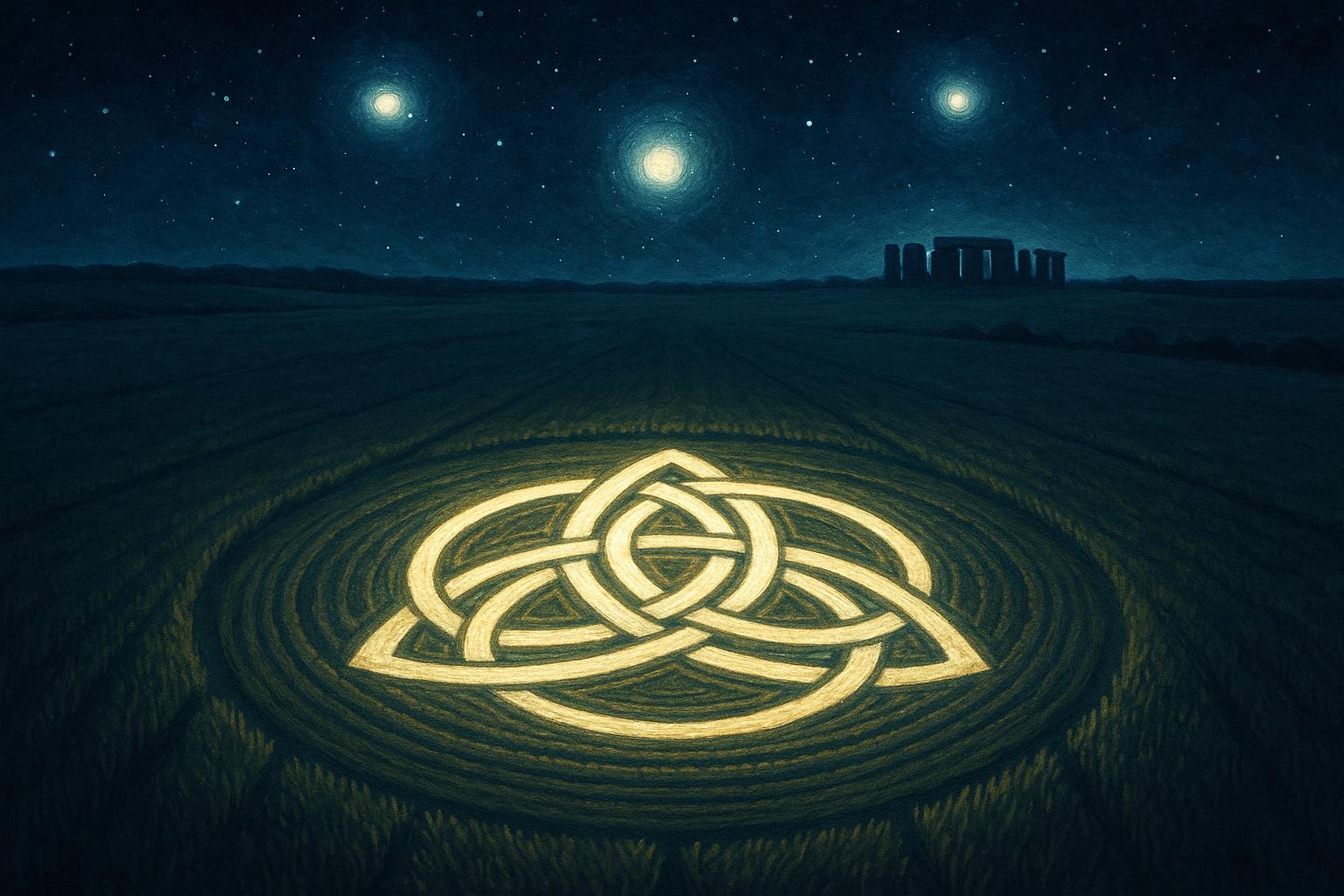Mysterious crop circles have once again captured public attention following recent sightings in Wiltshire, a region long celebrated as a nexus of UFO activity. Known for its rich tapestry of historical landmarks, including the iconic Stonehenge, Wiltshire has become the epicentre of crop circle phenomena since the late 20th century. This spring, two new designs were discovered—the first, a striking geometric formation with a central motif reminiscent of a Celtic knot, was spotted on May 15 in the village of Sutton Veny; shortly after, another intricate pattern emerged 30 miles away in Dorset on May 19.
Farmers and enthusiasts alike have reported these formations, which typically appear overnight. The sheer scale of these designs often ranges from 50 to 1,000 feet and suggests a level of planning and execution that intrigues both sceptics and believers in extraterrestrial involvement. While the public often assumes these patterns are the product of artists or pranksters, the legend persists that they could be celestial messages or markers prepared by UFOs.
Interestingly, since 2005, Wiltshire has recorded over 380 crop circles, marking it as the leading location for such phenomena in the UK. The area's unique geography, described by enthusiasts as being intersected by numerous ley lines—believed to be ancient pathways—may play a significant role in attracting these formations. These ley lines meander through locations of historical significance like Stonehenge, further embedding the area in folklore surrounding alien visitation. According to data compiled by local researchers, Wiltshire averages around 20 crop circles annually, reinforcing the notion that spring and early summer are peak times for sightings.
Crop circles have attracted both passionate interest and sceptical scrutiny over the decades. Enthusiasts argue that certain formations, such as the elaborate 2001 Milk Hill circle in Wiltshire, are too complex to be the handiwork of mere humans in a single night, especially given reports from witnesses who claim to have seen mysterious orbs of light prior to their creation. Monique Klinkenbergh, founder of the Crop Circle Exhibition in Pewsey Vale, expressed her belief in this ambiguity. "There is definitely a mystery going on, but it's very hard to label the source, whether it is extraterrestrial, paranormal, or just nature," she remarked, highlighting the ongoing debate.
While technological advancements in aerial drone photography and social media have made capturing these phenomena easier, they have also led to increased public curiosity and visitor influxes. The owner of the Sutton Veny field, for instance, expressed frustration at the damage inflicted on his crops but has since opted to monetise the intrigue by welcoming visitors for a small fee, as reported by an outlet dedicated to UFO discourse.
Sceptics, however, point to historical confessions, such as that of Doug Bower and Dave Chorley, who in the 1990s claimed responsibility for over 200 crop circles using basic tools. Their admissions stirred further debate around the authenticity of many crop circles, as did later demonstrations by aeronautics students aiming to replicate the phenomenon. This duality in perspectives—of genuine wonder versus artistic trickery—reflects the broader cultural narrative surrounding crop circles.
Despite the myriad theories, experiences of the unexplained persist in the minds of many, leading some to interpret sightings as calls to consciousness or warnings from beyond. Comments on social media platforms reflect this sentiment, with one UAP researcher questioning, “Who or what is trying to get our attention?” The mystery of crop circles continues to weave itself into the fabric of local legend and modern folklore, making Wiltshire not only a unique geographical location but also a symbol of humanity's ongoing quest to understand the unknown.
Reference Map
Source: Noah Wire Services
